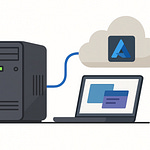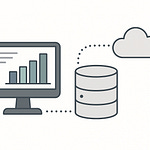Opening: Your Copilot Is Dumber Than You Think
Your Copilot isn’t smart. It’s well‑dressed autocomplete—an over‑caffeinated intern in a Microsoft badge who sounds confident while being utterly lost. The average admin installs it, asks one ambitious question like “Summarize last quarter’s sales across regions,” and then acts surprised when it responds with… whatever happens to fit in its limited context window. That’s not insight. That’s statistical guesswork delivered in a friendly tone.
See, most so‑called AI copilots run on something called retrieval‑augmented generation—RAG for short. In theory, it’s brilliant: you ask a question, it searches a knowledge base, grabs relevant chunks, and glues them to your prompt so the language model looks informed. In practice? It’s like asking a single librarian for all human knowledge. She sprints down one aisle, grabs three random books, and yells the answer while running back. One query. One retrieval. One chance to be wrong.
Now contrast that with how actual enterprise decisions work. Do you ever need just one piece of data? No. You need the spreadsheet from Finance, the research report from SharePoint, the metrics warehouse in Microsoft Fabric, and usually some external market data that isn’t even in your tenancy. Classic RAG collapses the moment your truth lives in more than one place. It can’t plan multiple searches, can’t validate contradictions, and certainly can’t understand that “Quarterly performance” means different things to Marketing and Manufacturing.
Yet people keep calling these systems “intelligent.” Wrong. They’re context tourists. They visit your data estate, take a few selfies with PDFs, and pretend they know the city. Meanwhile, the “average admin” honestly believes Copilot has omniscient access to every SharePoint folder. It doesn’t. Unless you build explicit connectors and reasoners, it’s operating blindfolded.
This isn’t just inefficient—it’s dangerous. Without agentic retrieval, enterprises drown in context fragmentation. Decisions get made on partial data. Compliance risks go unnoticed. Teams chase hallucinated insights produced by a model that never bothered to double‑check itself. The irony? The fix already exists.
Enter Agentic RAG. It doesn’t just fetch information; it thinks through it. It plans, cross‑checks, and reasons like a digital research team. By the end of this episode, you’ll know exactly how to make your Copilot stop acting like a parrot and start behaving like a scientist. And yes—there are four steps. We’ll fix your dumb Copilot in four precise steps.
Section 1: The RAG Myth — Why Linear Intelligence Fails
Alright, let’s dissect the myth. Retrieval‑Augmented Generation sounds sophisticated, but under the hood it’s brutally linear. Step one: retrieve a few slices of text based on vector similarity. Step two: stuff those slices into the prompt. Step three: generate an answer and declare victory. That’s it. No memory of previous searches, no reasoning about contradictions, no recognition of user context. It’s a straight line from query to answer—a glorified SQL join written in English.
The problem begins the moment reality gets messy. Say you ask, “Compare our device reliability with competitors.” A vanilla RAG system hits one index, grabs any document mentioning “reliability,” and spits out a summary. Did it check manufacturing logs in Fabric? Did it read that new testing report buried in SharePoint? Did it validate external data from the web? Of course not. It doesn’t even know those sources exist. It just paints over uncertainty with eloquence.
Think of it like a library analogy turned tragic. You walk in and ask one librarian about “global economics.” She runs to a shelf labeled “economics,” hands you a random book about currency exchange from 2012, and declares the question solved. Good customer service, terrible scholarship. Real intelligence would recruit multiple librarians—one for finance, one for history, one for policy—and then synthesize their findings. That’s the difference between retrieval and reasoning.
In enterprises, this failure multiplies. A single executive question often touches dozens of systems: SharePoint documents, Power BI datasets, Azure SQL tables, email threads. Classic RAG flattens all that complexity into a single hop. The result? Inconsistent outputs, shallow summaries, and hallucinated data phrased with confident diction. Regulatory compliance? Forget it. When the model pulls from whatever text happens to vector‑match, you lose provenance. Try explaining that to your audit committee.
Yet the marketing around Copilot makes it sound omnipotent. The brochures whisper, “Ask anything; Copilot knows your business.” No, it doesn’t. It performs text retrieval with amnesia. It can’t plan, reflect, or verify. It doesn’t know which SharePoint site contains the right document, or whether the Fabric warehouse is even synchronized. But because the phrasing is smooth, executives assume comprehension where there is only correlation.
This illusion of intelligence is what companies are buying into—an expensive comfort blanket woven from probability distributions. They celebrate when Copilot drafts an email correctly, ignoring that it misunderstood the source data entirely. They brag about “AI‑driven insights” without realizing those insights are assembled from mismatched contexts and partial snapshots.
Here’s the economic consequence: every mis‑summarized report, every hallucinated KPI, cascades into poor decisions. Projects pivot based on fiction. Compliance teams chase ghosts. And when reality catches up—when the fabricated insight fails in production—the blame falls on “AI limitations,” not on the lazy architecture that ensured failure.
The truth? Linear intelligence fails because enterprises aren’t linear. Data is distributed, contextual, and often contradictory. A fixed one‑query pipeline can’t adapt to that environment any more than a single neuron can think. What you need isn’t a better prompt; you need a system that can plan. One that can decide which services to use, in what order, and how to verify the outcome.
So, how do we teach a Copilot to operate like a research team instead of a parrot? That’s where Agentic RAG enters—the evolutionary leap from reactive retrieval to proactive reasoning. It adds layers of planning, specialized retrievers, and verification loops. In other words, it stops pretending to be smart and finally learns to think.
Section 2: Enter Agentic RAG — From Search to Reasoning
Here’s where we move from gimmick to intelligence. Agentic RAG isn’t another buzzword—it’s the missing faculty your Copilot was born without: executive function. Think of it as RAG that grew a prefrontal cortex. Instead of running one query and crossing its digital fingers, it breaks a problem into parts, assigns tasks to different “specialist” agents, checks their work, and then synthesizes the outcome. In short, it converts language models from parrots into planners.
Mechanically, Agentic RAG operates through multi‑agent orchestration, built on Azure AI Agent Service. Picture three roles in motion. First, the Planner—a kind of digital project manager. The Planner reads your query and decides which tools or data sources are relevant. Then come the Retriever Agents—domain experts trained to access structured or unstructured data. Finally, the Verifier or Reasoner Agent, functioning as editor‑in‑chief, checks consistency, validates citations, and compiles the final response. Together, they run what we call an adaptive reasoning loop: query, retrieve, validate, refine, and act. The crucial word is adaptive. Unlike standard RAG, this loop doesn’t terminate at the first output—it reroutes when contradictions appear.
Compare this orchestrated dance to a newsroom. The Planner is the managing editor assigning beats: “You, check SharePoint for internal reports. You, pull the sensor metrics from Fabric. You, scan the web for competitor data.” Each Retriever Agent fetches its portion. The Verifier fact‑checks the combined draft, re‑runs queries if citations conflict, and only then publishes the summary. The result isn’t a blob of text that merely sounds plausible—it’s a coherent, evidence‑linked insight. The leap here isn’t bigger models; it’s structured reasoning.
Let’s drill further into the Planner’s brain. It interprets your plain‑English question into a task map: which retrievers to use, which order to run them in, and how their findings should merge. This is where the Azure AI Agent Service earns its existence. It provides the orchestration layer that lets these agents communicate—microservices that speak through APIs, governed by Microsoft Entra authentication, not guesswork.
Now, about security—because the average compliance officer is already reaching for the panic button. Agentic RAG doesn’t cut corners. It’s built around On‑Behalf‑Of authentication, meaning your identity travels with the request. The system doesn’t impersonate you; it uses your verified token to fetch only what you have permission to see. Row‑Level Security (RLS) and Column‑Level Security (CLS) come baked in. The AI can’t accidentally reveal the CFO’s forecast to an intern. Every retrieval call is logged, auditable, and reversible.
This matters, because static RAG has no concept of user context. It grabs whatever its search layer allows, often bypassing the enterprise’s permission scaffolding entirely. Agentic RAG restores that discipline. When the Fabric retriever queries a Lakehouse table, it enforces the same RLS rules your BI dashboards obey. When the SharePoint agent rummages through document libraries, it honors site‑level permissions and Microsoft Purview labels. So the same policies that protect your human users now protect your AI ones.
Let’s fold this back into workflow reality. Suppose the question is: “Which glucose range does Product A underperform compared to Product B, and what’s the clinical impact?” Standard RAG will dump whatever snippets mention “Product A” and “glucose.” Agentic RAG, powered by Azure AI Agent Service, would first have its Planner identify three retrieval fronts—Fabric for sensor data, SharePoint for clinical notes, and Bing for external publications. Each Retriever Agent brings in relevant evidence. The Verifier compares trends across datasets, flags discrepancies, maybe even refines the original Fabric query if an outlier appears. Only after validation does it synthesize the final insight—with citations intact. That’s iterative reasoning in action.
Reactive RAG stops after step one; Agentic RAG learns and adjusts mid‑conversation. It can decompose follow‑up questions automatically. Ask, “Can we improve accuracy using recent studies?” and the same agents pivot to fetch emerging materials without losing context. It’s continuous comprehension, not episodic memory loss.
The compliance bonus is enormous. Every agent’s action is traceable in audit logs, every token authenticated, every document touch logged. You get the illusion of omniscience with the paperwork of prudence—something auditors adore.
So the philosophical shift is this: retrieval alone provides information. Agency converts that information into process. By introducing planning, specialization, and verification, Azure’s Agent Service transforms random data pulls into accountable reasoning chains. In the enterprise world, that’s the difference between an assistant you trust and one you quietly disable.
Now that our Copilot has a functioning brain, it’s time to feed it a proper memory. In other words, let’s give it somewhere substantial to look—starting with the unstructured chaos of SharePoint.
Section 3: Integrating SharePoint — Turning Chaos Into Knowledge
SharePoint is where corporate knowledge goes to hide. Every enterprise has one—an archaeological dig site of PowerPoints, meeting notes, outdated specifications, and documents named “Final‑V12‑ReallyFinal.” To humans, it’s chaos. To a naive RAG system, it’s unreadable chaos. Keyword search dutifully returns a thousand results, most of them irrelevant, and the average user scrolls until morale improves. Then they ask Copilot for help, and Copilot promptly summarizes the wrong decade.
Agentic RAG treats SharePoint differently—not as a library but as a knowledge substrate. It knows that buried inside those folders are the qualitative insights that Fabric’s structured tables will never capture: context, decisions, rationale. So instead of running a single keyword sweep, the SharePoint retriever agent uses semantic embeddings and vector search to map meaning, not just text. Ask about “product reliability in humid environments,” and it doesn’t fixate on those exact words; it notices documents discussing failure modes, condensation resistance, and adhesive performance. It recognizes intent.
Here’s where permission awareness becomes the make‑or‑break feature. Every SharePoint site has its own tangled web of permissions—teams, sub‑sites, confidential folders. A dumb crawler ignores that and accidentally surfaces HR grievances in a marketing report. The agentic model, however, authenticates on your behalf, inheriting your exact security context. It can only read what you’re cleared to see. The output is trimmed by policy automatically—security trimming, courtesy of Microsoft Entra and Purview labels. So the AI’s intelligence never outpaces its authorization.
Let’s run a practical scenario. An R & D manager types, “Summarize performance differences of Product A in coastal climates.” The Planner divides this into sub‑quests. A Fabric retriever prepares to analyze numeric sensor data, while the SharePoint agent dives into internal research papers, maintenance logs, and engineering notes tagged with humidity‑related terms. It finds a 2023 field‑test report, a discussion thread about material corrosion, and a summarized findings document from the reliability team. Each document is vector‑scored for semantic relevance, retrieved, and passed up to the Verifier agent. That Verifier cross‑checks those qualitative results against Fabric numbers. If contradictions appear—say, an outdated document claims minimal corrosion—it flags the inconsistency and requests newer data. The final synthesized answer tells the R & D manager precisely which assemblies degrade in high humidity and cites the validated sources.
What used to be several hours of manual digging now collapses into one continuous reasoning cycle. SharePoint shifts from a passive repository into an active participant in enterprise intelligence, essentially a neural memory of corporate decisions. The Agentic RAG layer doesn’t simply read documents; it learns relationships—project lineage, authorship trends, contextual clusters—and can thread them into coherent arguments.
Now, compliance officers may still twitch when they hear “autonomous retrieval.” Relax. Every query and document touch is logged. Audit trails remain intact. Regulatory frameworks such as ISO 27001 and GDPR depend on accountability, and this system provides it automatically. The agent can even attach metadata citing the document path and access timestamp to every generated phrase. That means every claim the AI makes can be traced back to a specific version of a file—non‑repudiation for robots.
In short, integrating SharePoint under Agentic RAG turns content chaos into knowledge choreography. Your unstructured past becomes searchable by meaning, safeguarded by policy, and validated by cross‑reference. SharePoint stops being a digital attic and becomes cognitive infrastructure. But qualitative context is only half the brain. The other half—the numeric, structured truth—lives within Microsoft Fabric, and that’s where we go next.
Section 4: Microsoft Fabric — The Structured Counterpart
Welcome to the other hemisphere of your enterprise brain—the structured side. If SharePoint stores your tribal knowledge, Microsoft Fabric holds your empirical truth. It’s the unified analytics backbone where numbers, models, and event streams converge into something approximating coherence. Most organizations treat it as a data warehouse. Under Agentic RAG, it becomes a reasoning substrate.
Here’s the role Fabric plays: precision. It doesn’t speak anecdotes; it speaks telemetry, transactions, and time series. Within Fabric live the Lakehouse, the Warehouse, and the Semantic Model—each a different dialect of structure. A Fabric Data Agent, built atop Azure AI Agent Service, translates natural language into structured queries that traverse those layers securely. Ask, “Show quarterly yield variance for Product A by region,” and it quietly crafts an optimized SQL‑like query targeting the right tables and partitions, executing against your authenticated context. No prompts, no Power BI detours—direct, governed intelligence.
Now, raw access to numbers is meaningless without protection, so fabrication security isn’t an option; it’s architecture. Every interaction is encrypted and authenticated through Microsoft Entra ID, ensuring that the agent operates under your verified user token. Remember the chaos of service‑principal shortcuts that ignore Row‑Level Security? Those are banned here. The On‑Behalf‑Of flow carries your identity end‑to‑end, enforcing RLS and Column‑Level Security automatically. If Finance marks a column confidential, the AI never glimpses it. And every execution leaves footprints in Fabric’s audit logs, satisfying auditors who treat logs as bedtime stories.
On top of that sits Purview governance. Sensitivity labels travel with the data—“Confidential,” “Internal Only,” “Export Restricted.” When the Fabric Data Agent composes a query using such fields, policies intercept instantly. Breach attempts trigger DLP enforcement before a single byte escapes. It’s essentially enterprise‑grade baby‑proofing for AI. The model can explore but not electrocute itself.
So what happens when we combine this structured discipline with the messy intuition of SharePoint? The Azure AI Agent Service orchestrates it. Picture a courtroom: the Fabric agent supplies the hard evidence—charts, counts, sensor averages—while the SharePoint agent delivers the witness testimonies. The Verifier Agent cross‑examines them, ensuring the numbers and narratives align before presenting the verdict as a unified, citation‑rich answer.
Let’s use an example. An operations lead asks, “Are we losing efficiency due to packaging defects?” The Planner dispatches the Fabric Agent to retrieve yield rates by production line from the Warehouse. Simultaneously, it sends the SharePoint Agent to scour maintenance logs and supplier correspondence. The Fabric Agent returns a dataset showing minor dips correlating with humidity spikes. The SharePoint Agent surfaces an email thread citing warped packaging materials during the same period. The Verifier corroborates both, labels the correlation credible, and the system drafts a concise finding—complete with quantitative graphs and referenced documents. Instant Six Sigma diagnostics, minus the sleepless analysts.
Under the hood, the Azure AI Agent Service handles concurrency, batching retrievals through what’s effectively a microservice mesh. Each agent publishes a schema describing what it can access—Fabric schemas, SharePoint metadata, or Bing’s open web context. The Planner leverages that registry like an API directory. The result is modular intelligence: swap or extend agents as new data domains emerge without rewriting the entire Copilot.
Performance‑wise, the innovation isn’t bigger models; it’s smarter retrieval order. The Planner may query Fabric first to define numerical boundaries, then use those to narrow SharePoint exploration. That reduces noise and accelerates convergence. Think of it as “data pruning through reason.” Instead of drowning in ten thousand documents, the system knows which ten matter because the numbers already framed the question.
Compliance officers adore this setup because governance scales with intelligence. Every agent call is logged, every transformation traceable. When the CFO asks, “Where did this number come from?” you can point directly to the Fabric table, the timestamp, and the executing user token. That transparency converts fear into trust—critical currency in regulated industries like finance or healthcare.
Combine these properties and you’ve built an analytical symphony: structured precision from Fabric harmonized with contextual understanding from SharePoint. The enterprise moves from “search and hope” to “retrieve, verify, decide.” And yes—the speed is startling.
Transition
Now combine this multitier recall with reasoning, and you get velocity—terrifying velocity. The research‑to‑decision cycle that once required a parade of analysts now collapses into hours. Which leads us directly to the final movement: impact.
Section 5: The Enterprise Impact — From Months to Minutes
Let’s talk consequences—the good kind. When you upgrade from passive RAG to Agentic RAG across Fabric and SharePoint, the average enterprise timeline bends. What took months of reporting turns into minutes of verified synthesis. The AI no longer waits for humans to translate questions into data queries; it performs that translation, validation, and summarization automatically.
Consider R & D. Teams used to assemble cross‑functional committees to align on data: engineers exporting test metrics, analysts cleaning them, compliance checking permissions, and someone inevitably renaming files “final_final.” Agentic RAG crushes that cycle. The Planner orchestrates agents that retrieve Fabric performance tables and SharePoint design notes simultaneously, merge them, and draft a validated summary—complete with citations and security labels. Decision latency? Nearly zero.
Compliance and audit experience similar shockwaves. Traditional audits meant emailing evidence packs for weeks. Now, the same AI that wrote the report can regenerate its reasoning trail on demand. Every retrieval call, query string, file path, and timestamp is recorded. Auditors can replay the exact steps leading to a conclusion, transforming due diligence from a scavenger hunt into a checkbox. What used to be a risk exposure becomes a governance jewel.
Manufacturing gains a predictive edge. Fabric’s quantitative streams reveal process deviations; SharePoint’s qualitative notes explain causes. The agentic loop correlates them before alerts escalate, effectively performing continuous improvement without a Six Sigma consultant. Imagine replacing a room of overworked interns with a panel of expert consultants who never sleep, never forget context, and never exceed budget. That’s the operational equivalent of compounding intelligence.
Of course, automation only matters if it’s accountable. Agentic RAG preserves every layer of enterprise inheritance—permissions, sensitivity labels, and audit logs—so CIOs can scale intelligence without scaling risk. Each insight is traceable to the user credential and governed repository that produced it. The system operates like a financial ledger for thought: transparent, reversible, and tamper‑evident.
And the human cost? Reduced boredom. Professionals stop copy‑pasting from exports and start interpreting synthesized truths. Meetings shorten because the AI arrives with pre‑validated evidence. Projects accelerate because data and narrative converge instantly.
This is the part most executives miss: moving fast isn’t reckless when the reasoning is documented. The real recklessness is still building dumb copilots—single‑shot, context‑blind parrots masquerading as strategists. Those belong in the museum of early‑AI curiosities, next to Clippy.
So, if your enterprise still celebrates a Copilot that only retrieves, congratulations—you’re funding a fancy autocomplete. The serious players are already using agents that plan, verify, and act. The regression from months to minutes is just the surface benefit. The deeper one is epistemic integrity—decisions that actually reflect reality because the intelligence constructing them’s held accountable.
This is why continuing to build dumb copilots isn’t merely inefficient—it’s reckless. The future of enterprise AI isn’t bigger prompts; it’s smaller feedback loops with better memory and governance. Agentic RAG delivers both. Intelligence finally behaves like a system, not a stunt.
Conclusion: Stop Building, Start Thinking
RAG without agency is obsolete. It’s yesterday’s architecture pretending to handle tomorrow’s problems. The modern enterprise doesn’t need chatbots—it needs cognitive infrastructure, systems that can plan, verify, and act under your identity, not beside it. That’s Agentic RAG: an ecosystem of deliberate reasoning built on Azure AI Agent Service, speaking securely to SharePoint and Microsoft Fabric like a team of experts sharing one authenticated brain.
If your Copilot still can’t schedule its own retrievals, validate references, or explain its reasoning trail, stop calling it intelligent—it’s decorative. Intelligence implies intent, verification, and consequence. Decorative AI performs monologues; Agentic AI conducts experiments. The difference is accountability. One creates output. The other creates understanding.
This architectural shift isn’t optional anymore. The moment your decisions span structured and unstructured data, static RAG collapses. Compliance officers already know it, analysts already feel it, and leadership will soon demand proof of reasoning, not just confidence of tone. Microsoft’s stack finally provides the scaffolding: Azure AI Agent Service for orchestration, Fabric Data Agents for quantitative truth, SharePoint retrievers for context, and Purview governance sealing the whole nervous system.
So here’s your challenge: stop deploying show‑ponies. Build agents that argue with themselves until they agree on truth. Experiment with multi‑agent planning. Test On‑Behalf‑Of authentication. Wire Fabric and SharePoint together until your AI can actually defend its answers.
Because intelligence without action isn’t intelligence at all.
If this explanation clarified more than your vendor ever did, subscribe. The next deep dive deconstructs multi‑agent design inside Microsoft 365 AI—how to make your Copilot not just attentive, but sentient within policy. Efficiency isn’t magic; it’s architecture. Lock in your upgrade path: subscribe, enable alerts, and let new insights deploy automatically. Proceed.










